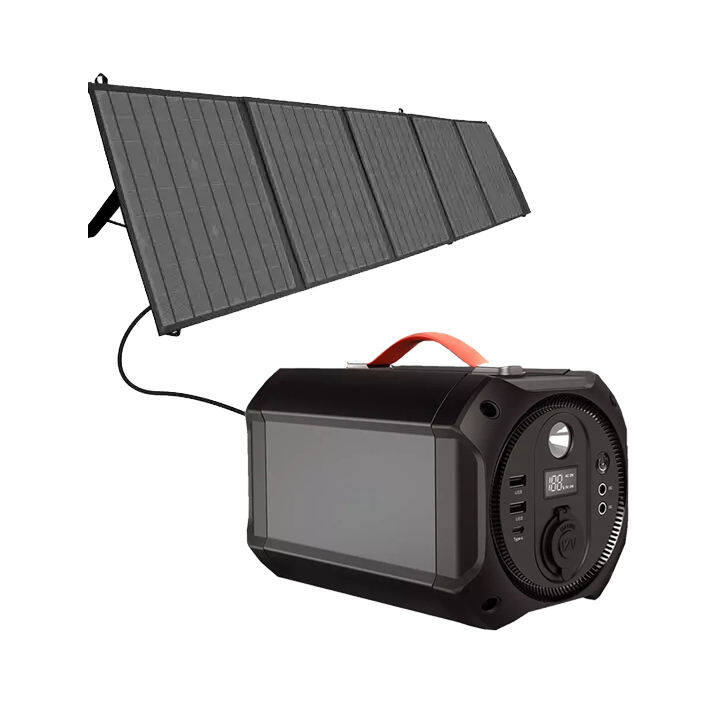Email format error
Email cannot be empty
Email already exists
6-20 characters(letters plus numbers only)
The password is inconsistent
Email format error
Email cannot be empty
Email does not exist
6-20 characters(letters plus numbers only)
The password is inconsistent


Understanding Pure Sine Wave Power: Why It Matters and How It Affects Your Electronics
In today's technologically advanced world, we rely heavily on various electronic devices for both personal and professional use. From the smartphone in your pocket to the refrigerator in your kitchen, electronics have become integral parts of our daily lives. However, not everyone is aware of the different types of power that these devices use, and how the quality of that power can impact their performance and longevity. One crucial concept in this realm is "pure sine wave power." In this blog post, we'll explore what pure sine wave power is, why it’s important, and how it affects your electronic devices.
What is Pure Sine Wave Power?
To start with, let's define what we mean by "pure sine wave power." In simplest terms, pure sine wave power is a type of electrical signal that is smooth and consistent, resembling a perfect sine wave when graphed. This type of power is generated by a high-quality inverter and is considered the most stable and clean form of electrical power available.
In contrast, other types of power waveforms, such as square waves or modified sine waves, are less smooth and can have jagged edges when visualized. These variations can lead to electrical noise and interference, which can adversely affect the performance of sensitive electronic equipment.
The Science Behind Pure Sine Wave Power
To grasp why pure sine wave power is important, it's useful to understand a bit about electrical waveforms. Electrical power typically comes in two forms: alternating current (AC) and direct current (DC). AC is the type of power that flows through the electrical outlets in your home, and it's characterized by its periodic reversal of direction. This is in contrast to DC, where the current flows in a single, constant direction.
Within AC power, the waveform can vary. A pure sine wave is a smooth, continuous waveform that oscillates evenly in a periodic manner. It is the ideal waveform because it provides a consistent voltage level, which is crucial for the optimal performance of electronic devices. This smooth oscillation results in less electrical noise and reduces the likelihood of interference with other electronic components.
Why Is Pure Sine Wave Power Important?
- Compatibility with Sensitive Electronics
Many modern electronics, especially those with sophisticated microprocessors and digital components, are designed to operate with pure sine wave power. Devices such as laptops, medical equipment, and audio/visual systems are particularly sensitive to the quality of the power they receive. Pure sine wave power ensures that these devices function correctly without the risk of malfunction or damage.
- Improved Efficiency and Longevity
Using pure sine wave power can improve the efficiency of your electronics. Devices running on pure sine wave power typically experience less heat buildup and operate more efficiently. This can lead to a longer lifespan for your equipment, as consistent and clean power reduces wear and tear on internal components.
- Reduced Electrical Noise
One of the significant advantages of pure sine wave power is its ability to minimize electrical noise. Electrical noise can interfere with the performance of electronic devices, causing malfunctions or degraded performance. Pure sine wave power, with its smooth waveform, helps reduce this noise, leading to better and more reliable operation.
- Enhanced Performance of Motors and Transformers
Many devices, such as appliances with electric motors or transformers, rely on a consistent power supply to operate efficiently. Motors and transformers are sensitive to the waveform of the electrical signal, and a pure sine wave helps ensure they run smoothly. This is particularly important for devices like refrigerators, pumps, and other household appliances that have significant electrical loads.
How Does Pure Sine Wave Power Compare to Other Waveforms?
To better understand the benefits of pure sine wave power, it's helpful to compare it with other types of waveforms:
- Square Wave Power
Square wave power has a very different waveform compared to pure sine wave power. It alternates abruptly between high and low voltage levels, creating a signal that looks like a series of squares on an oscilloscope. This waveform is less smooth and can introduce significant electrical noise. Square wave power is typically less expensive to produce but is not suitable for most modern electronics due to its poor compatibility and potential to cause damage.
- Modified Sine Wave Power
Modified sine wave power is a more common alternative to pure sine wave power and is a step up from square wave power. It approximates a sine wave but with noticeable distortions and flat tops. While it is better than square wave power, modified sine wave power can still cause issues with sensitive electronics. Devices that rely on a smooth sine wave may not perform optimally with modified sine wave power, and it can potentially shorten the lifespan of such devices.
Applications of Pure Sine Wave Power
Pure sine wave power is particularly useful in several applications:
- Uninterruptible Power Supplies (UPS)
UPS systems often use pure sine wave power to provide backup power during outages. A pure sine wave UPS ensures that sensitive equipment, such as computers and medical devices, continues to operate seamlessly during a power disruption. This helps prevent data loss and equipment damage.
- Solar Power Systems
Many solar power systems utilize pure sine wave inverters to convert the DC power generated by solar panels into AC power. Using pure sine wave inverters ensures that the power supplied to household appliances and electronic devices is of high quality and compatible with a wide range of equipment.
- Portable Generators
Portable generators, especially those designed for camping or emergency use, often come with pure sine wave outputs. This ensures that users can safely power their sensitive electronics and appliances without risking damage or reduced performance.
How to Choose the Right Power Source for Your Needs
When selecting a power source for your devices, consider the following factors:
- Device Compatibility
Check the specifications of your devices to determine their power requirements. If your devices are sensitive and require a pure sine wave for optimal performance, investing in a pure sine wave inverter or power source is essential.
- Power Quality
Assess the quality of the power being supplied. Pure sine wave power is ideal for sensitive electronics, but other types of power may be acceptable for less critical applications.
- Cost vs. Benefit
While pure sine wave power sources are often more expensive, the benefits in terms of device performance and longevity can outweigh the cost. Evaluate your needs and budget to make an informed decision.
Conclusion
Understanding what pure sine wave power is and why it matters can help you make better choices when it comes to powering your electronic devices. With its smooth waveform and consistent voltage levels, pure sine wave power ensures optimal performance, reduced electrical noise, and longer equipment lifespan. Whether you're powering sensitive electronics, using a UPS system, or setting up a solar power system, pure sine wave power is a reliable and effective choice for maintaining the quality and efficiency of your devices.
By paying attention to the type of power your devices require, you can ensure they operate at their best and enjoy a more reliable and trouble-free experience with your electronics.

